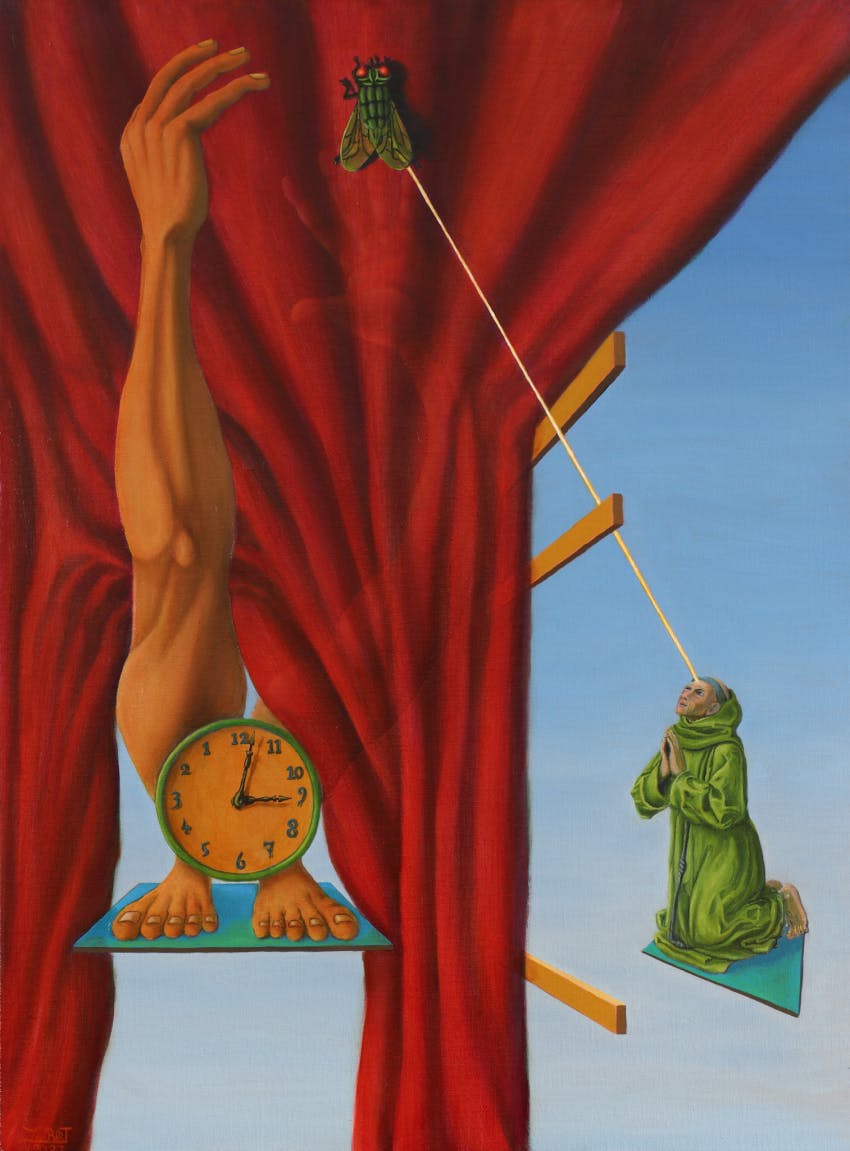The Hands of Time and the Fly of Crivelli
Oil on Linen || 2023
80 X 60 CM
In the hallowed halls of the Pinacoteca di Brera in Milan, I found myself captivated by the brushstrokes of centuries past. The Renaissance section, while not my usual preference, drew me in with its timeless allure. Amidst the works of renowned masters, a name unfamiliar to my ears beckoned me - Carlo Crivelli. His painting, the Camerino Triptych (Triptych of Saint Domenico), spoke to me in a language of art I had never encountered before.
As I scrutinized the canvas, Crivelli's enchanting mastery seemed to transcend the boundaries of time. It was a conversation between artist and observer, an experience that lingered long after my departure from the museum. The year 1482 marked the birth of this masterpiece, and yet, here I was, a modern-day admirer ensnared by its charm.
Intrigued by this unexpected connection, I delved into the world of Carlo Crivelli upon returning home. Three other works emerged from the shadows, each revealing the artist's distinctive touch: The Annunciation, with Saint Emidius; The Vision of the Blessed Gabriele; and Lenti Madonna.
A particular revelation emerged in The Vision of the Blessed Gabriele – an ingenious trick that reached across time. Fruits, suspended at the painting's zenith, cast shadows upon the celestial backdrop, blurring the lines between Crivelli's world and mine. The deliberate choice to create illusions that extended beyond the canvas captivated me, a timeless ploy that resonated just as profoundly today as it did in 1491.
My investigation into Crivelli's oeuvre uncovered not only artistic brilliance but also glimpses of the man himself. The Vision of the Blessed Gabriele exposed a playful rebel in Crivelli, pushing the boundaries of artistic conventions with a touch of humor. It was as if the artist's personality echoed through the ages, inviting me to join him on a journey where creativity knew no bounds.
Inspired by the enduring magic of Crivelli's message, I embarked on my own artistic venture, fully aware that I could never match the brilliance of the master. Yet, the notion that an artist's essence could withstand the relentless march of time fueled my creativity. In the hands of Carlo Crivelli, art became a timeless conversation that echoed through the centuries, inviting us to traverse the realms of imagination and revel in the enduring power of human expression.
